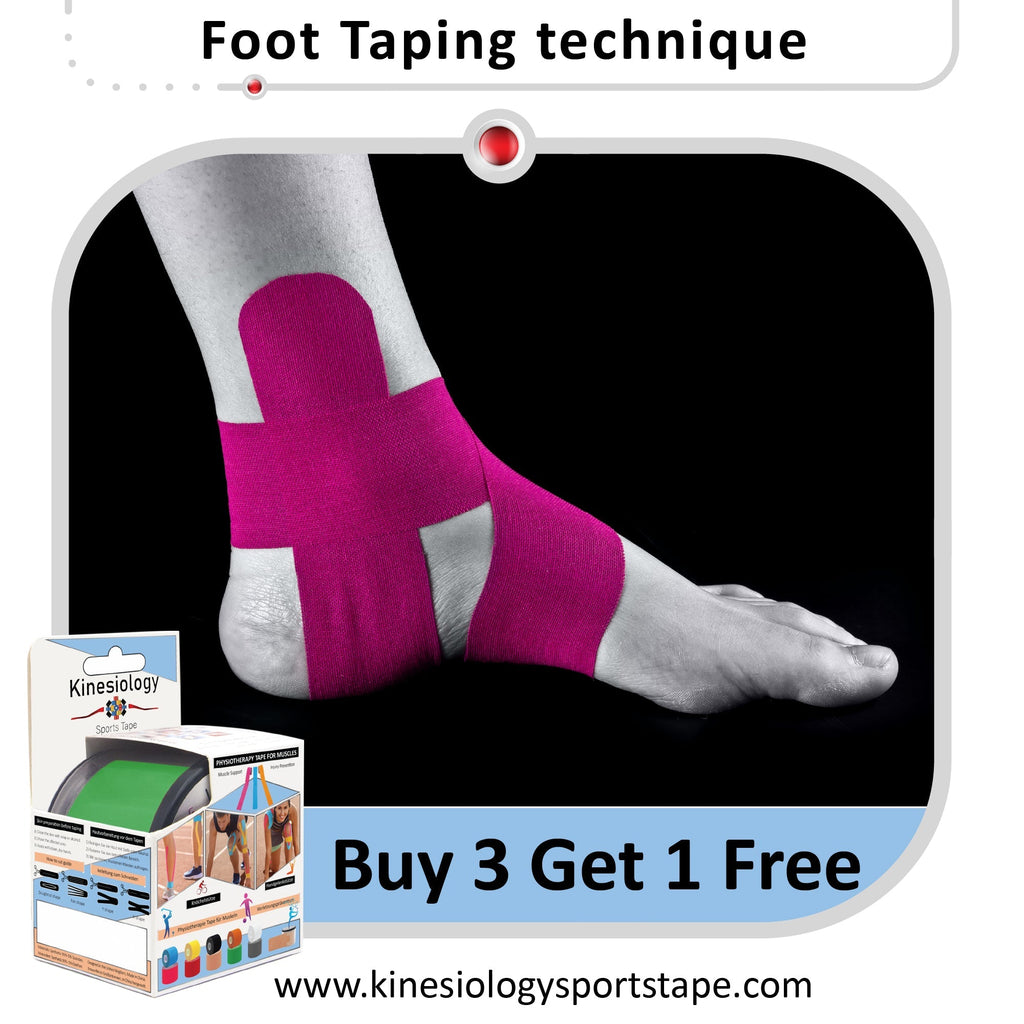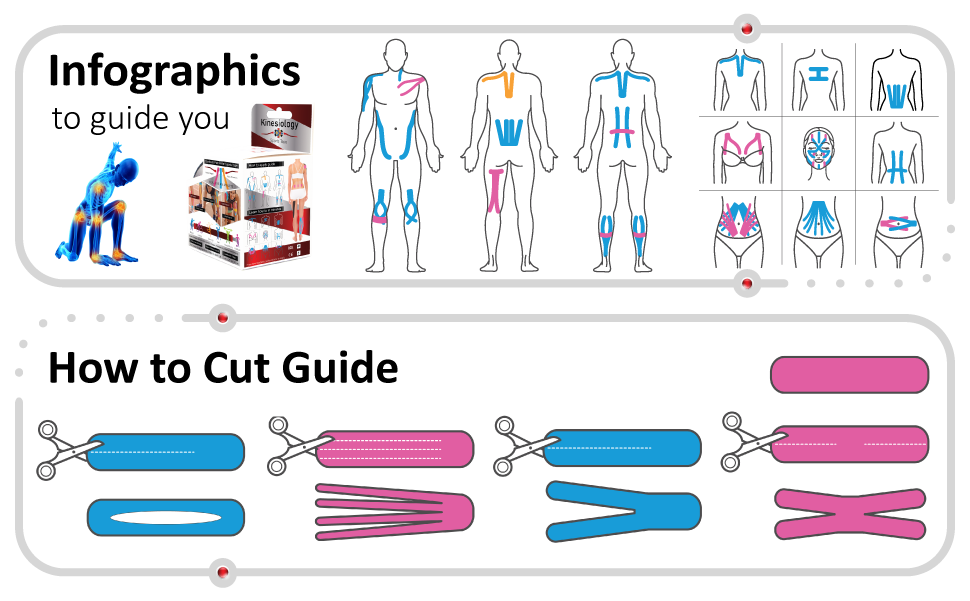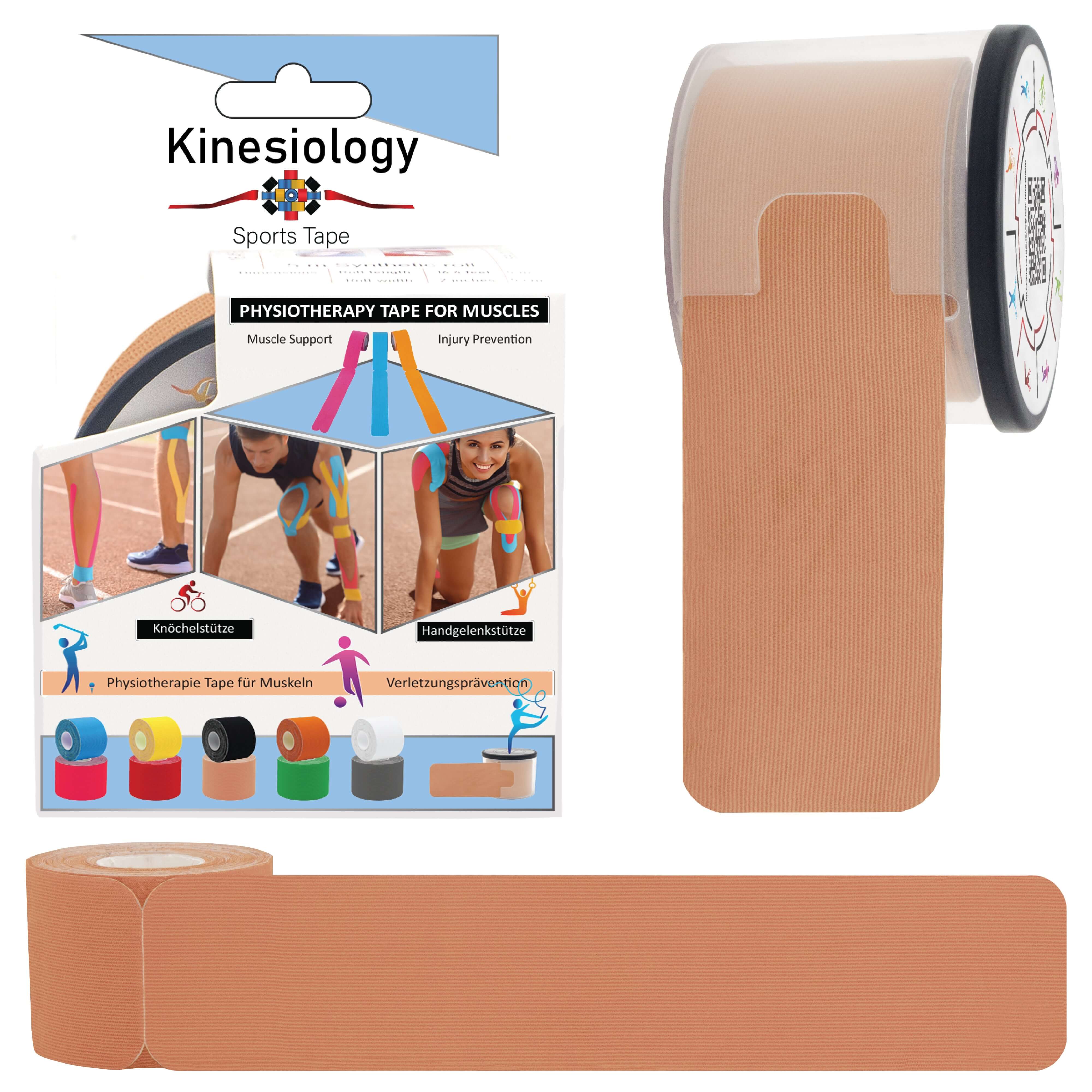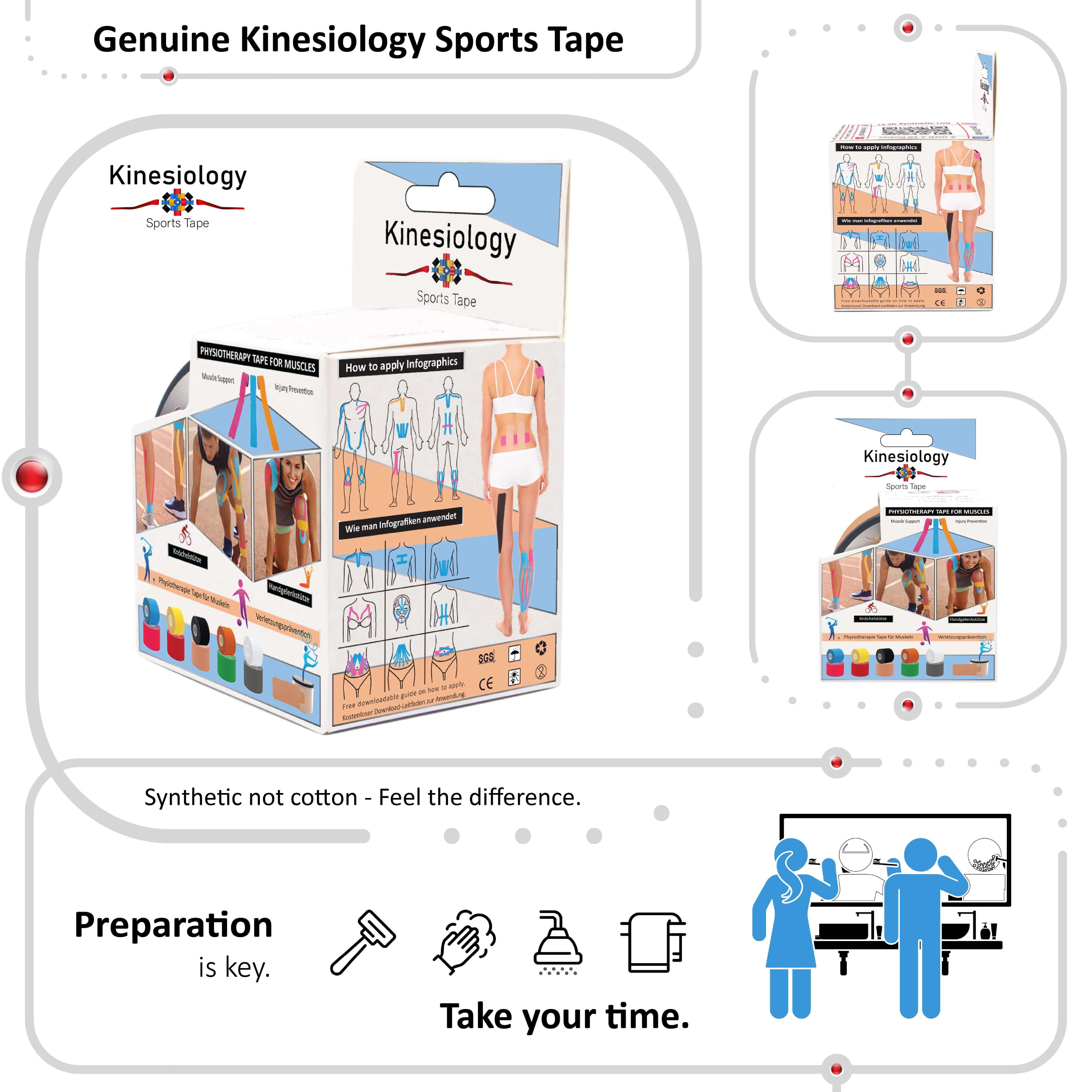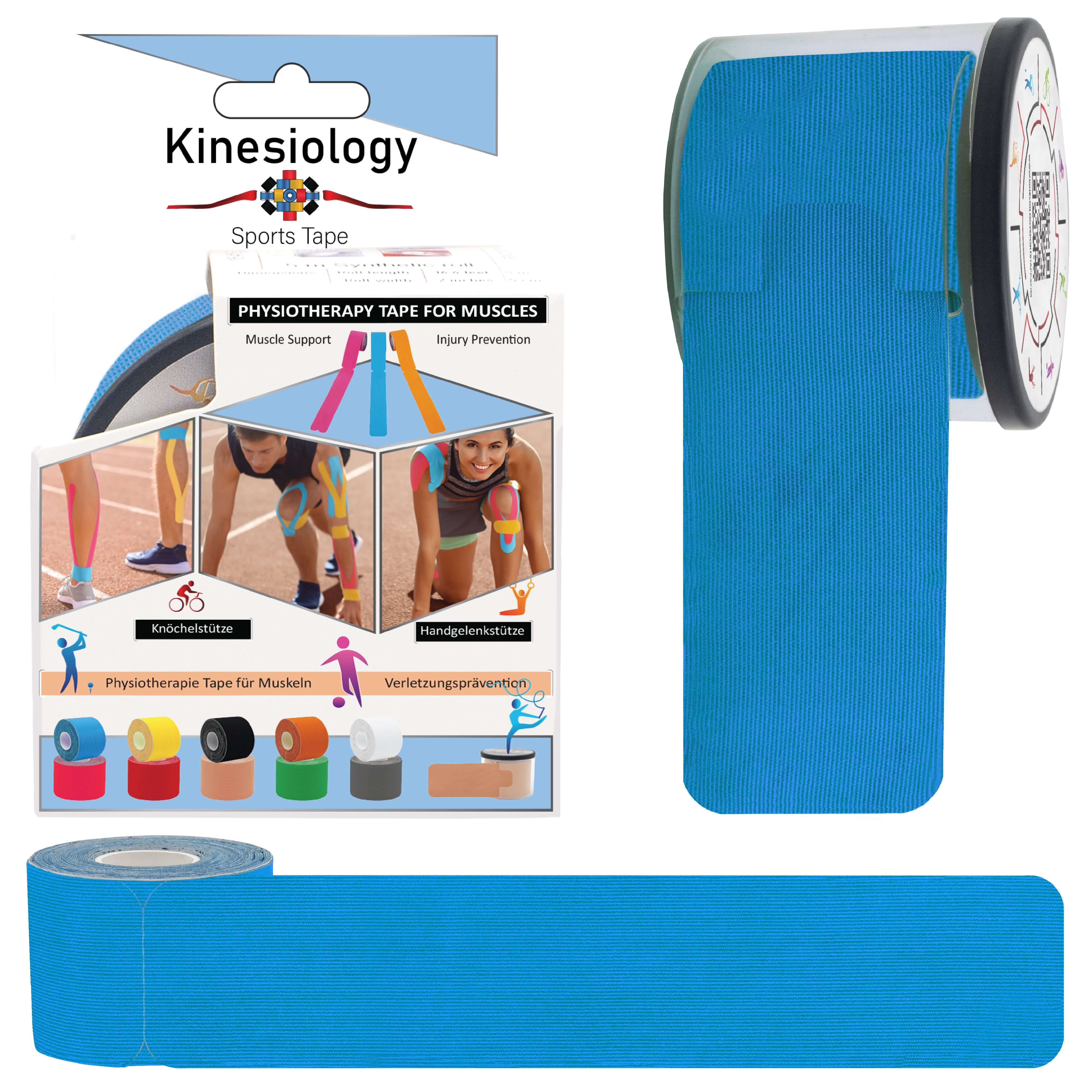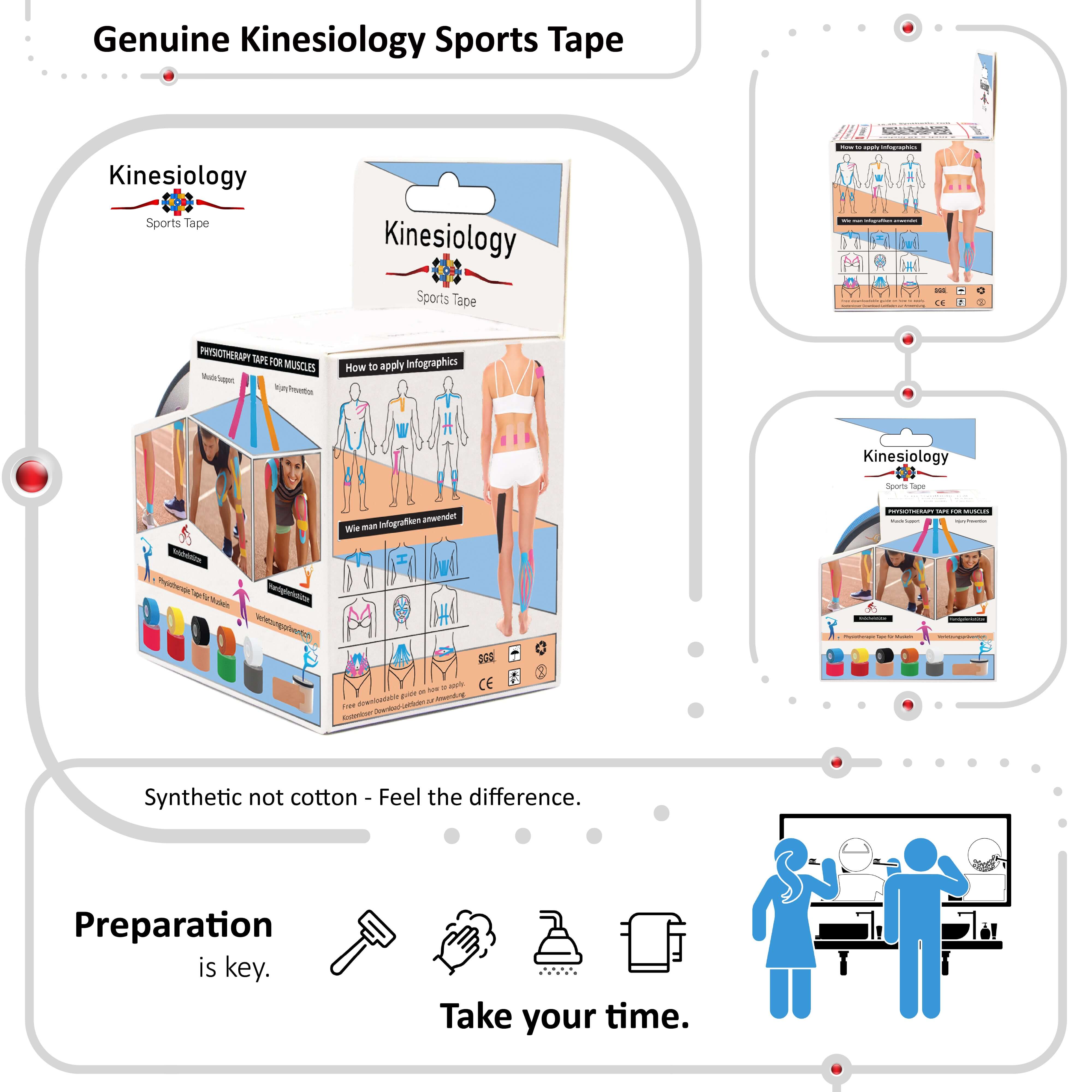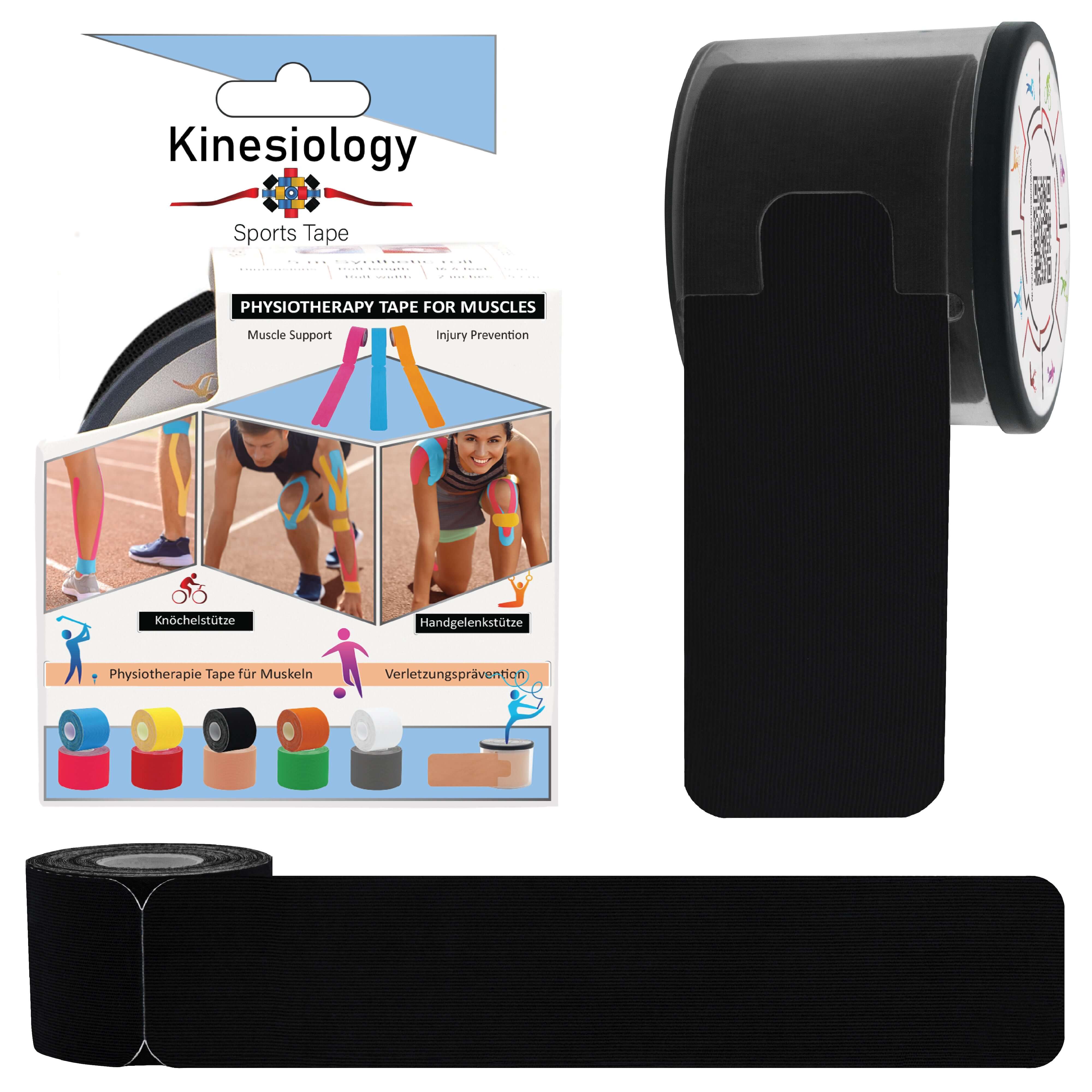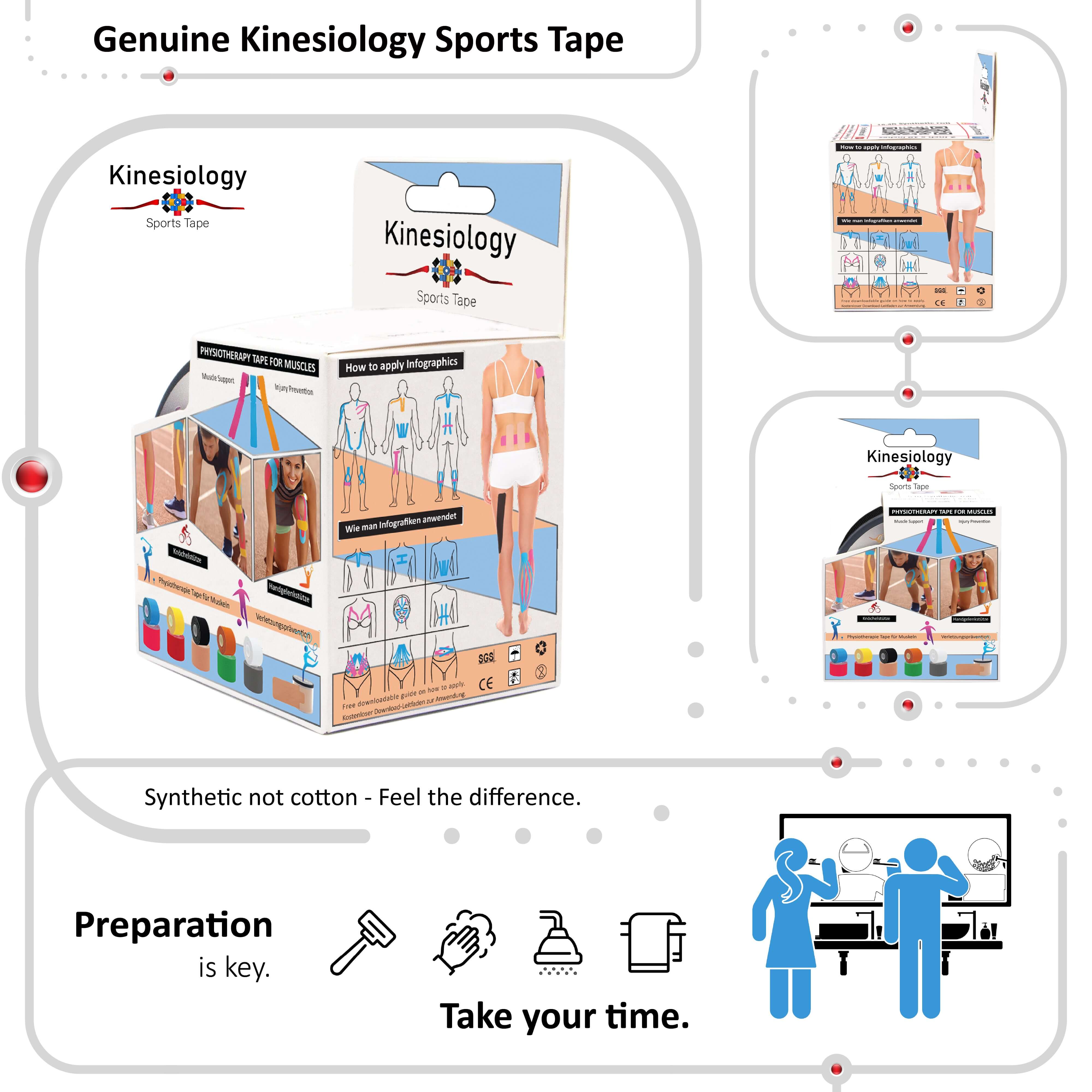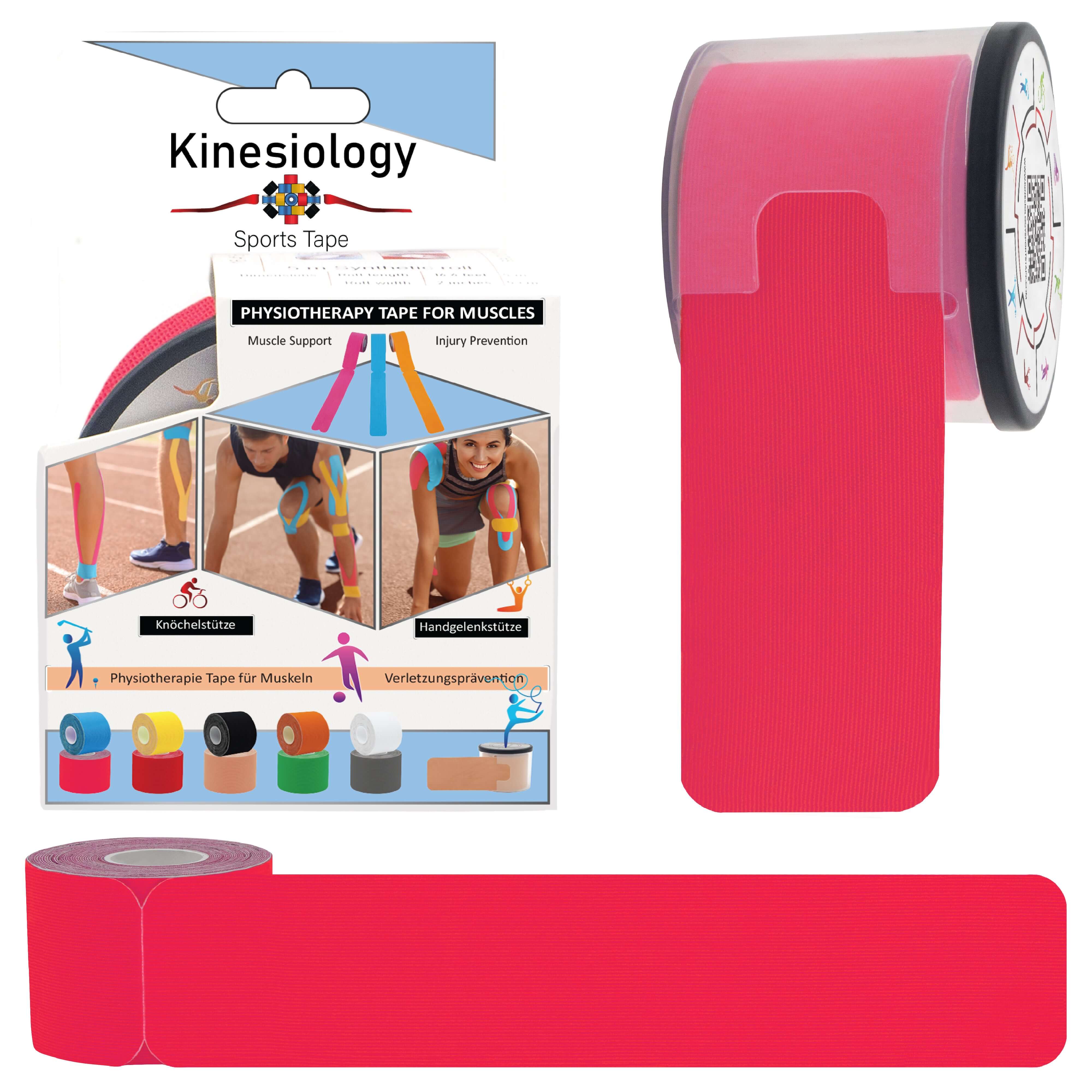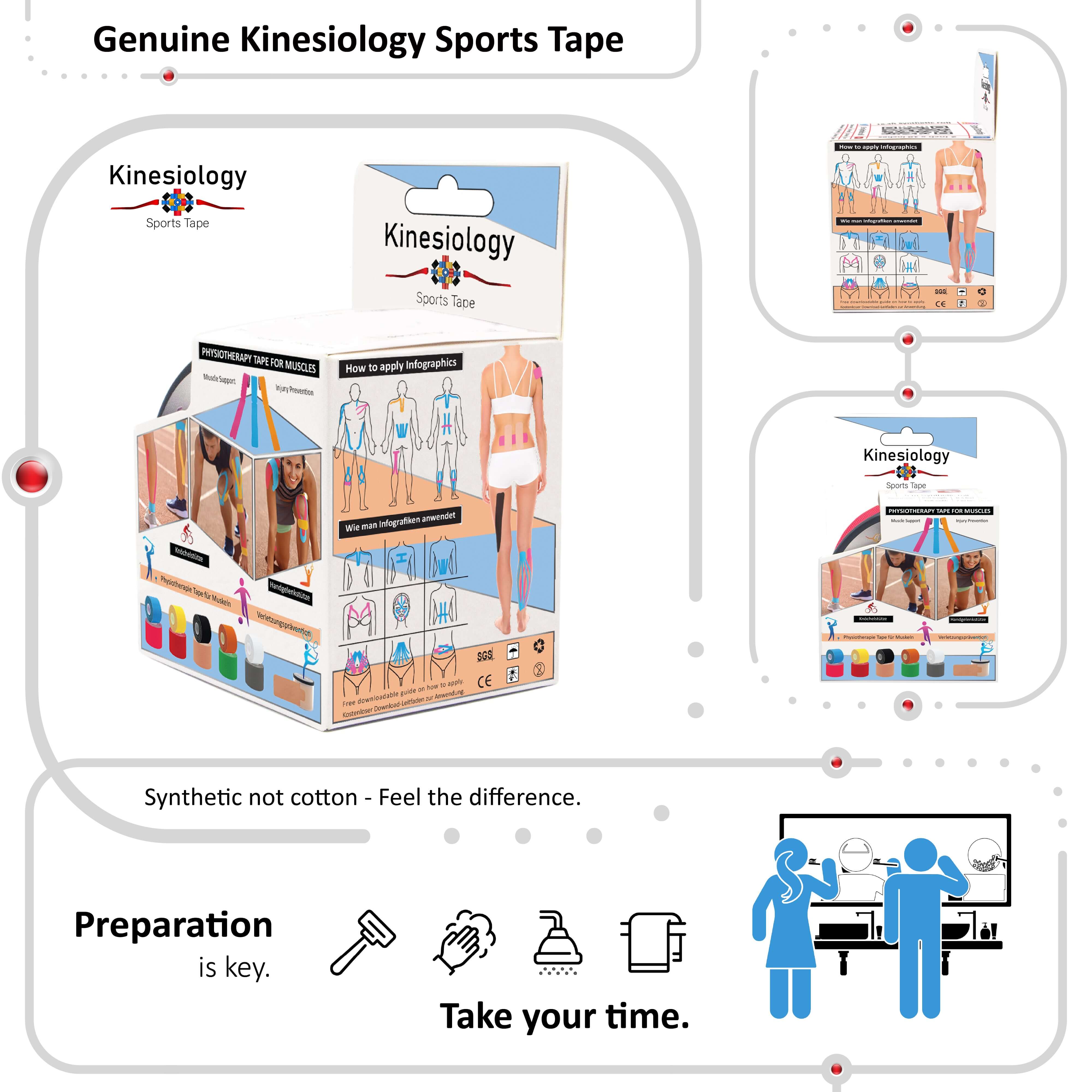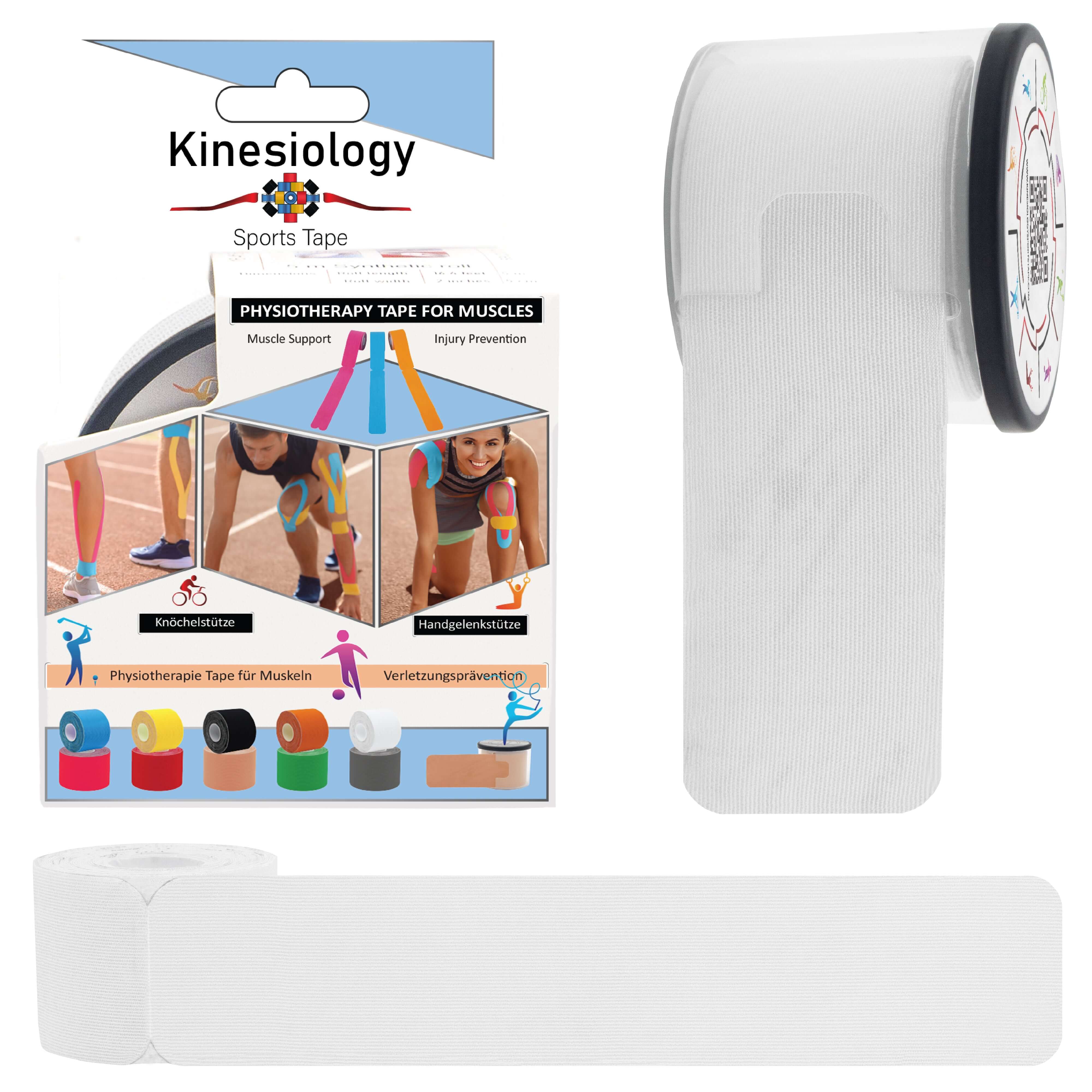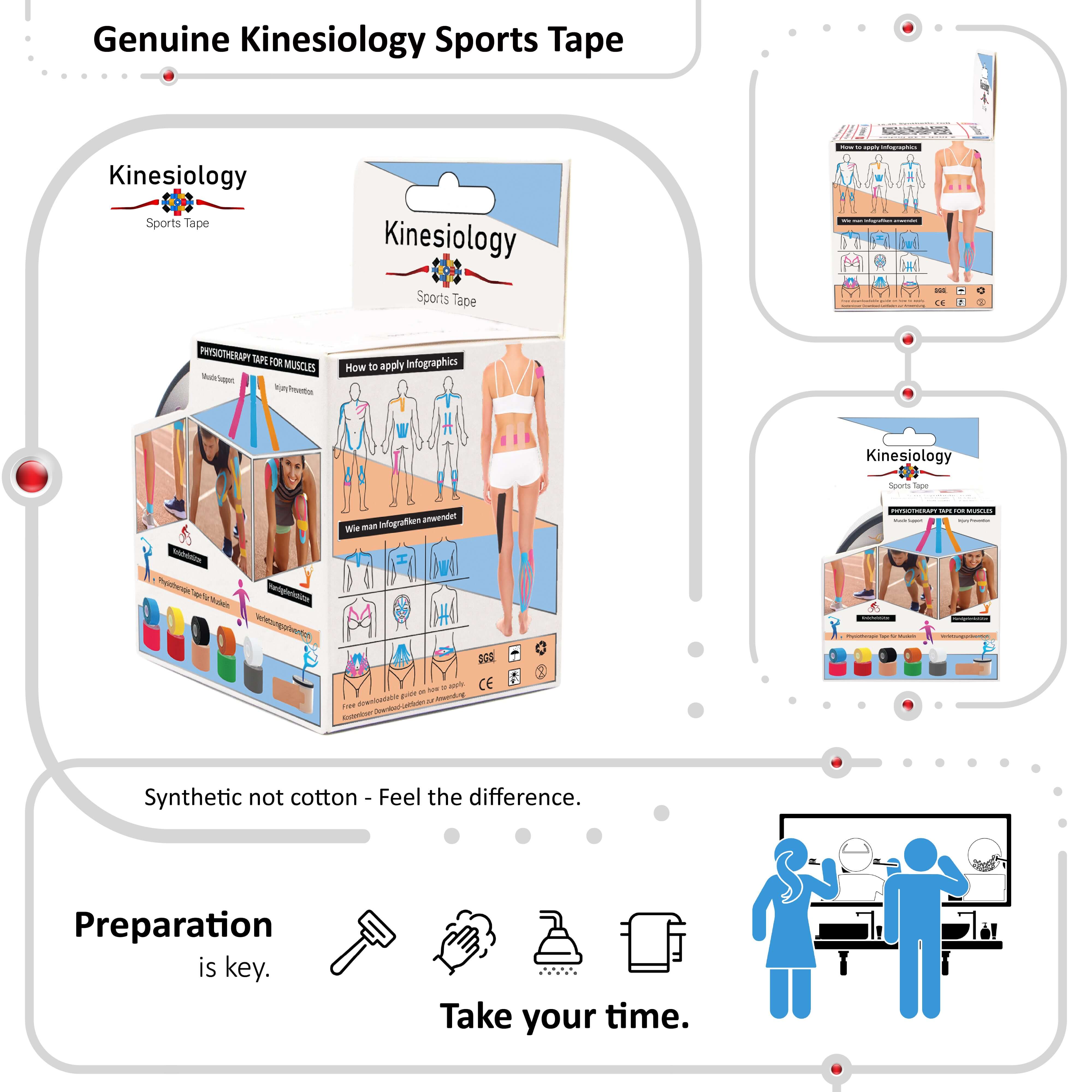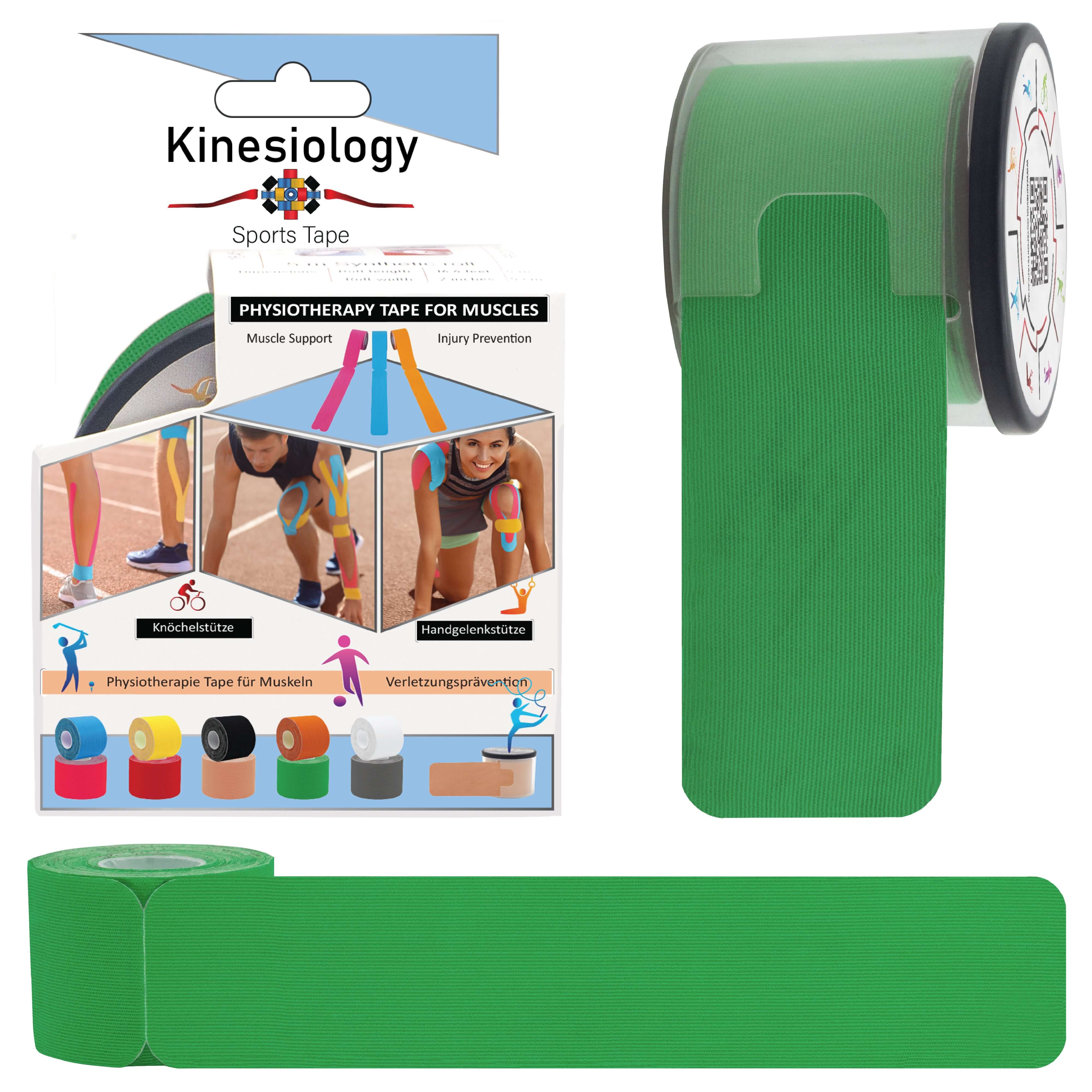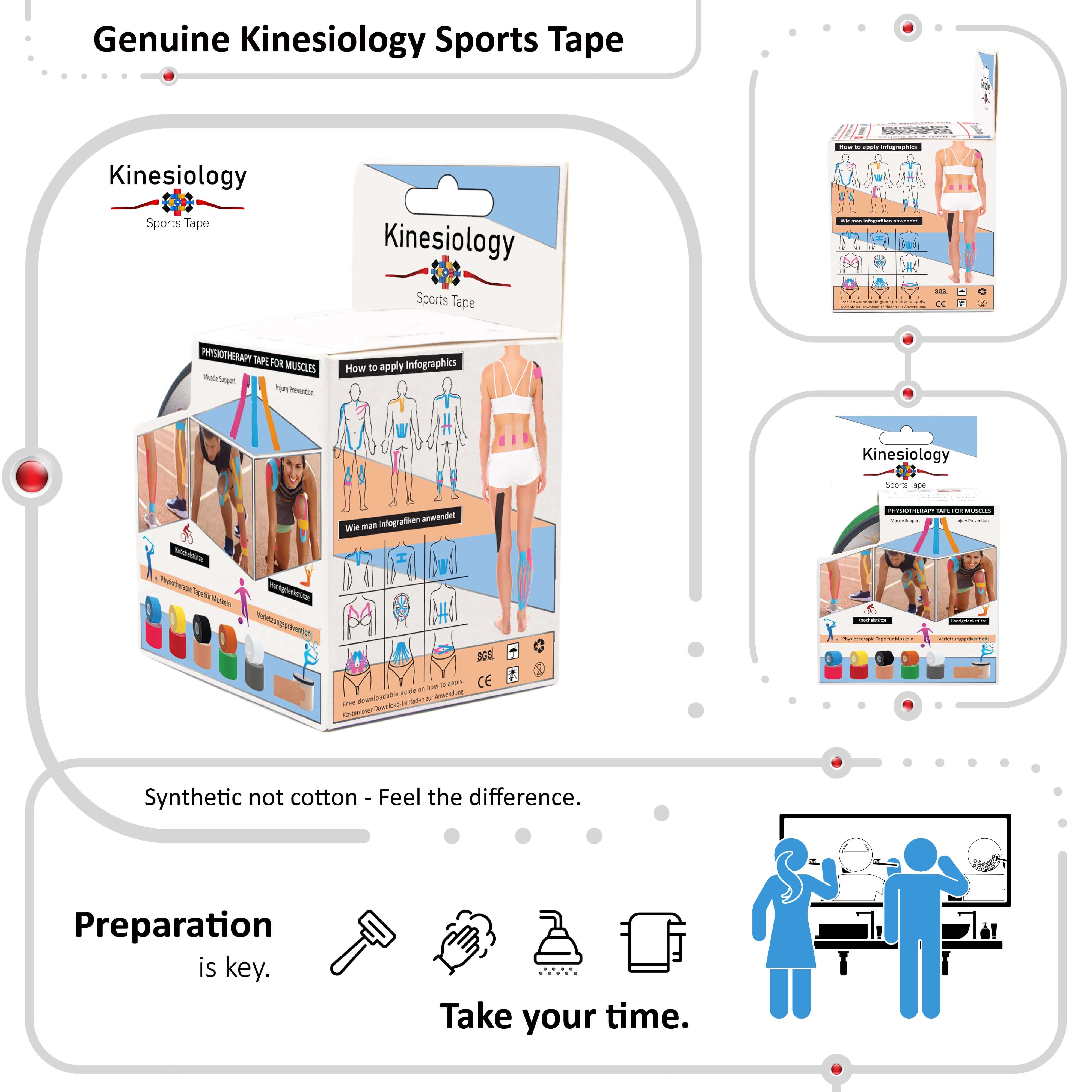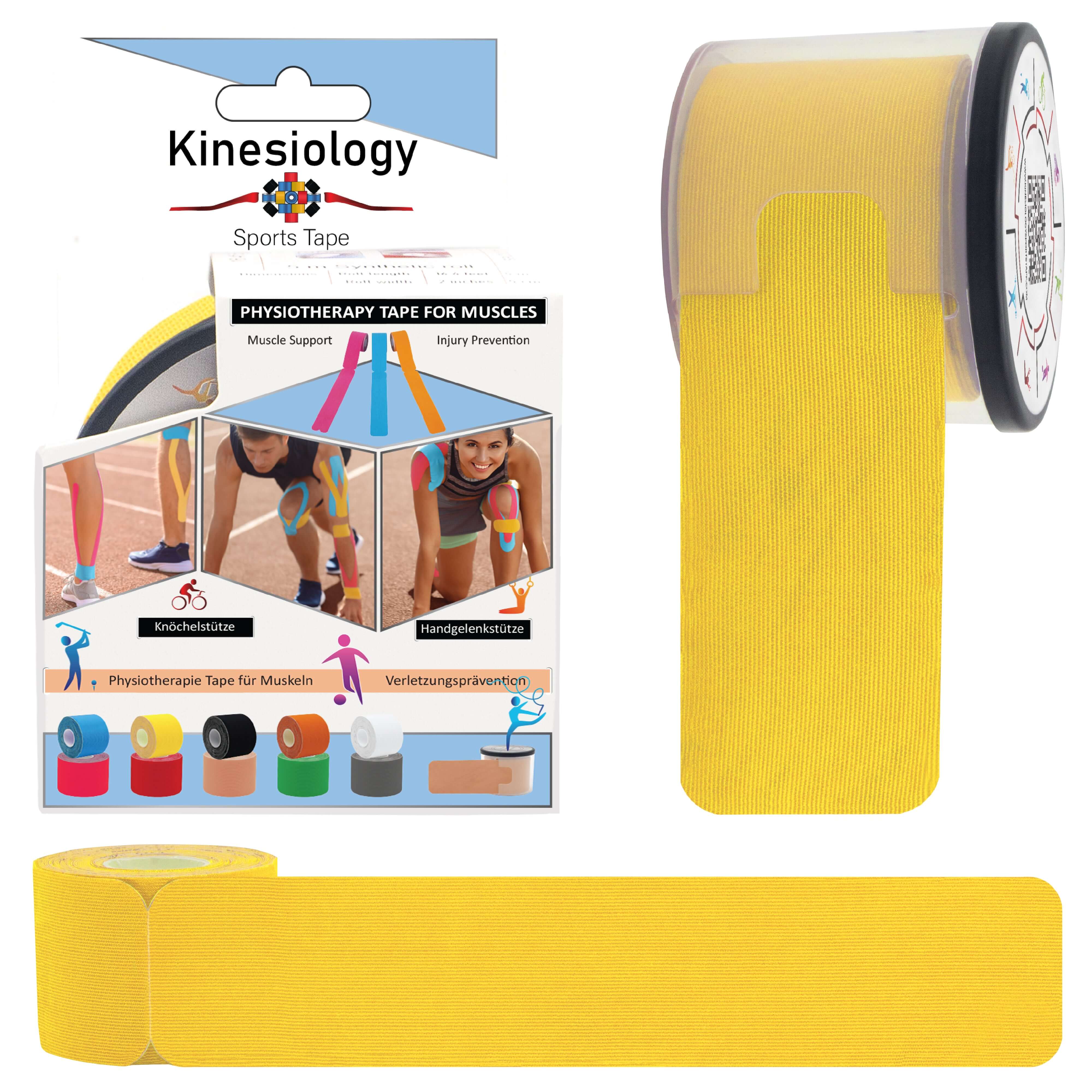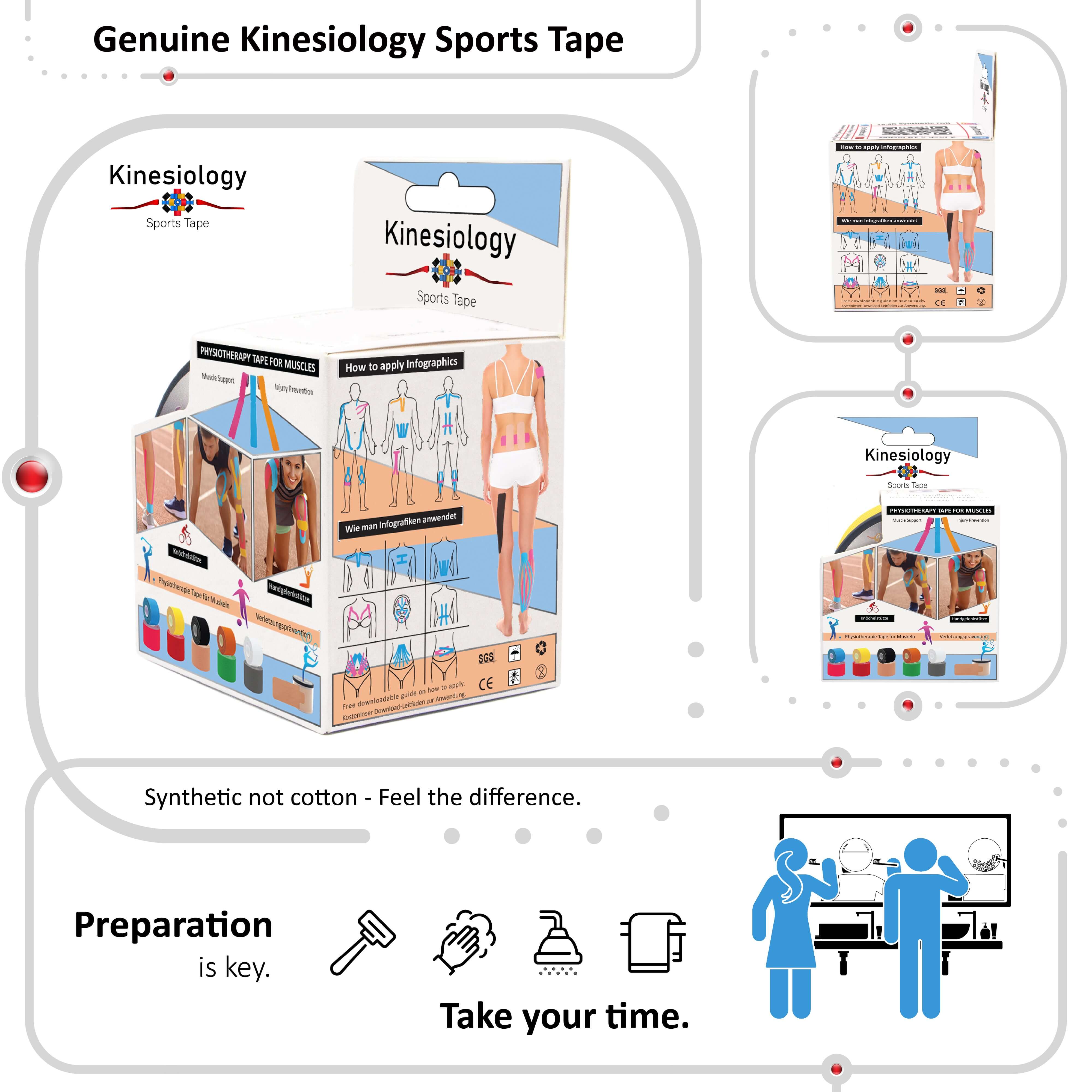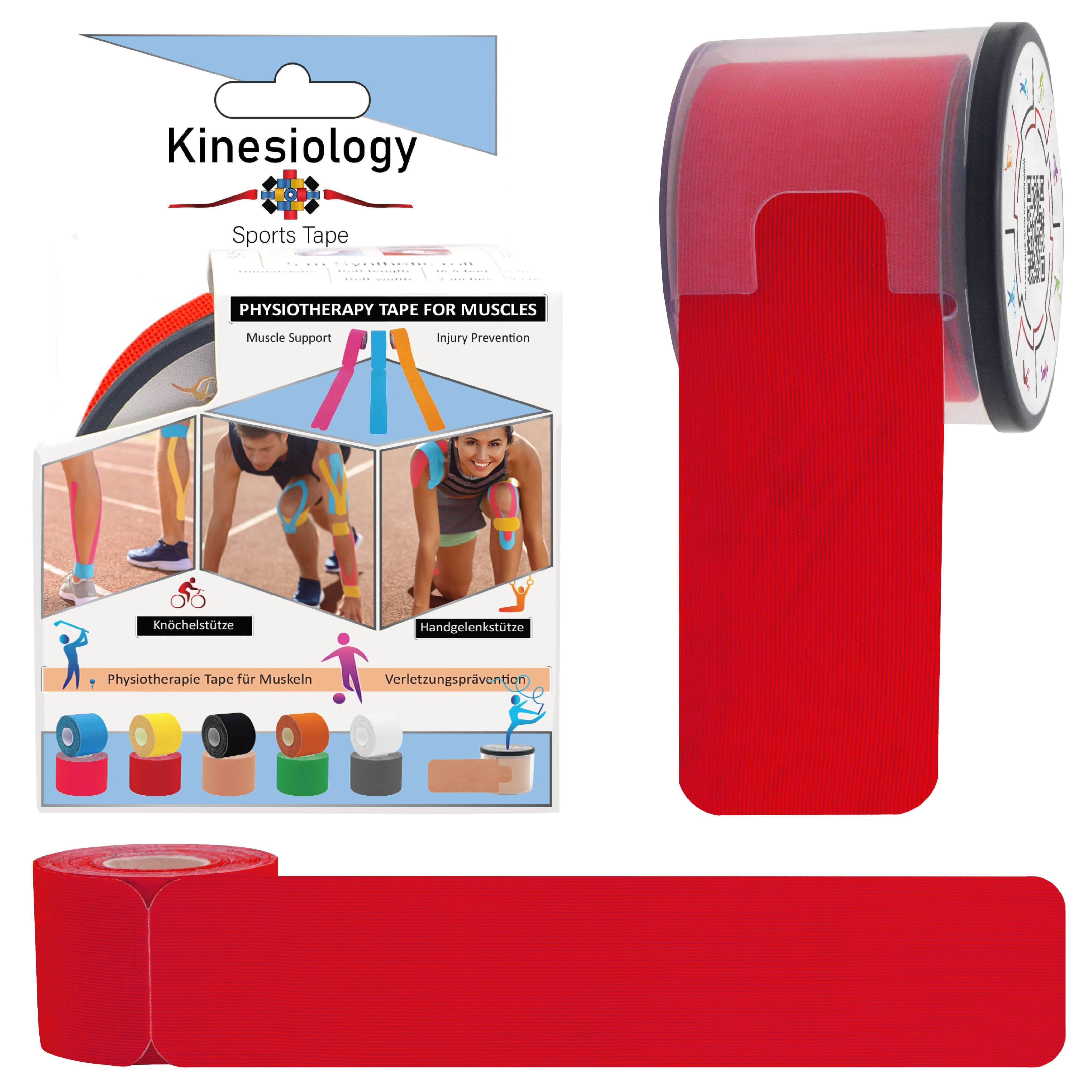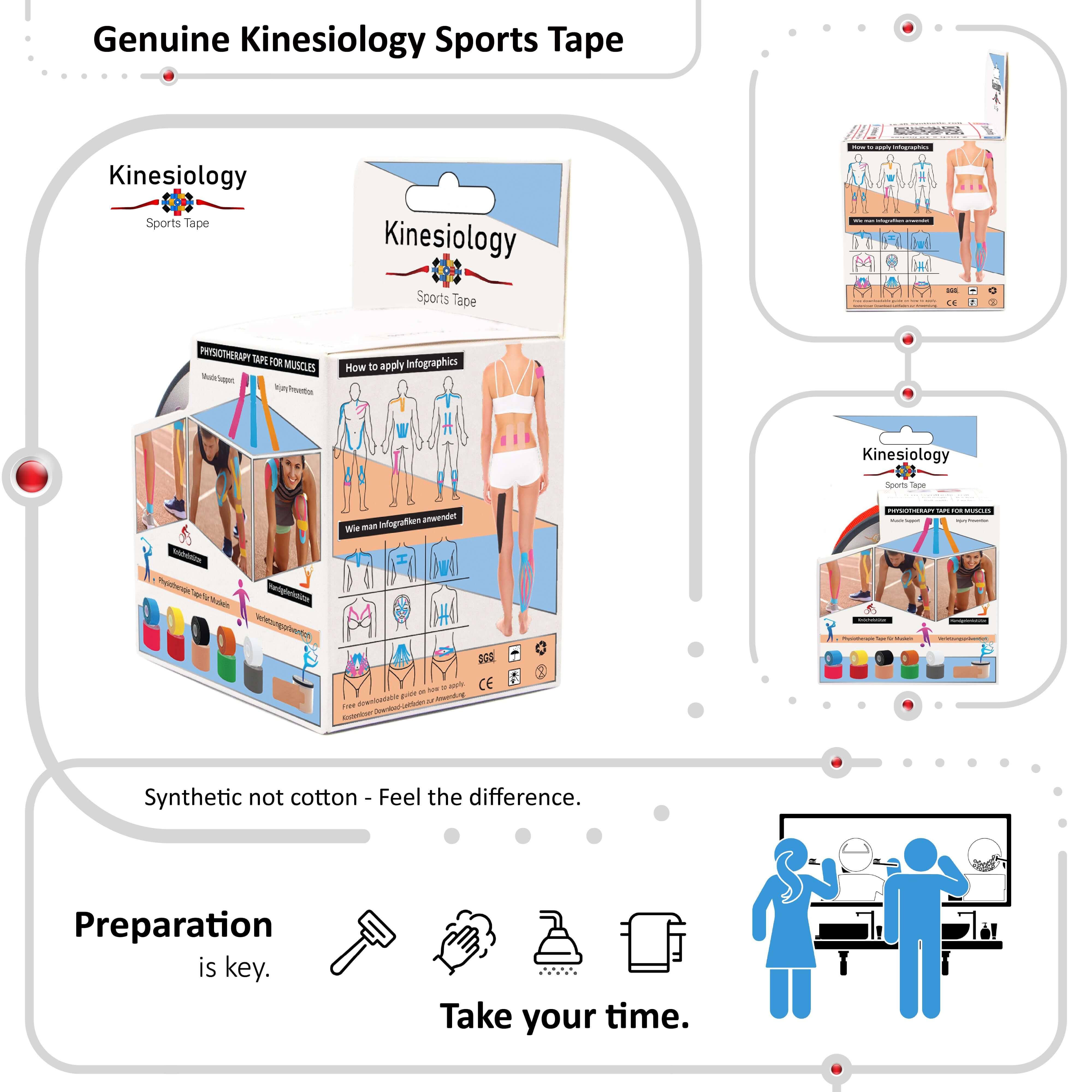
Kinesiology Tape for Shoulder Pain and Rotator Cuff Injuries: Complete Therapeutic Guide

Shoulder pain represents one of the most common musculoskeletal complaints affecting people across all age groups and activity levels. The shoulder joint, being the most mobile joint in the human body, sacrifices stability for range of motion, making it particularly susceptible to injury and dysfunction [1]. From overhead athletes dealing with repetitive stress injuries to office workers experiencing postural-related pain, shoulder problems can significantly impact daily activities and quality of life. Traditional treatment approaches often involve rest, medication, or restrictive immobilization, but kinesiology tape offers a revolutionary alternative that provides therapeutic support while maintaining the mobility essential for shoulder function.
The complexity of the shoulder joint system, which includes the glenohumeral joint, acromioclavicular joint, sternoclavicular joint, and scapulothoracic articulation, requires sophisticated treatment approaches that address multiple components simultaneously [2]. Kinesiology tape's unique properties make it ideally suited for shoulder applications, as it can provide support and pain relief while allowing the full range of motion necessary for normal shoulder function. This capability is particularly valuable for individuals who need to maintain their arm function while recovering from injury or managing chronic conditions.
Research has consistently demonstrated the effectiveness of kinesiology tape for various shoulder conditions, with studies showing significant improvements in pain levels, range of motion, and functional capacity [3]. The tape's ability to enhance proprioception, improve muscle activation patterns, and reduce pain makes it particularly valuable for rotator cuff injuries, which represent some of the most challenging shoulder conditions to treat effectively. Unlike rigid taping methods that restrict movement, kinesiology tape works with the shoulder's natural biomechanics to promote healing while maintaining function.
The rotator cuff, consisting of four muscles that provide dynamic stability to the shoulder joint, is particularly responsive to kinesiology tape applications. These muscles work together to maintain proper joint alignment during movement while providing the fine motor control necessary for precise arm positioning [4]. When these muscles are injured or dysfunctional, kinesiology tape can help restore proper activation patterns, reduce pain, and support the healing process while allowing continued use of the arm for daily activities.
This comprehensive guide explores the science behind kinesiology tape's effectiveness for shoulder pain and rotator cuff injuries, provides detailed application techniques for various shoulder conditions, and offers evidence-based strategies for maximizing therapeutic outcomes. Whether you're dealing with acute injury, chronic pain, or post-surgical recovery, understanding how to properly apply and utilize kinesiology tape can be a valuable component of your shoulder rehabilitation and pain management strategy.
Understanding Shoulder Anatomy and Common Pain Patterns
The shoulder complex represents one of the most intricate joint systems in the human body, consisting of multiple articulations, muscles, ligaments, and other soft tissue structures that work together to provide both mobility and stability [5]. To effectively use kinesiology tape for shoulder conditions, it's essential to understand this complex anatomy and how different structures contribute to shoulder pain and dysfunction.
The glenohumeral joint, formed by the articulation between the humeral head and the glenoid fossa of the scapula, is the primary shoulder joint and provides the majority of shoulder motion. This ball-and-socket joint allows movement in all three planes, including flexion and extension, abduction and adduction, and internal and external rotation [6]. The joint's remarkable mobility comes at the cost of inherent instability, as the shallow glenoid fossa provides minimal bony constraint for the large humeral head.
The rotator cuff muscles play a crucial role in shoulder function and are frequently involved in shoulder pain conditions. The supraspinatus muscle initiates arm abduction and helps maintain the humeral head's position in the glenoid fossa. The infraspinatus and teres minor muscles provide external rotation and posterior stability, while the subscapularis muscle provides internal rotation and anterior stability [7]. These muscles work together to create a dynamic stabilization system that maintains proper joint alignment during movement.
The scapula, or shoulder blade, serves as the foundation for shoulder function and must move in precise coordination with the arm to maintain optimal joint mechanics. The scapulothoracic articulation, while not a true joint, allows the scapula to glide over the posterior chest wall, providing additional range of motion and serving as a stable base for arm movement [8]. Dysfunction in scapular movement patterns, often called scapular dyskinesis, is a common contributor to shoulder pain and can significantly impact the effectiveness of other shoulder treatments.
Common shoulder pain patterns often reflect dysfunction in specific anatomical structures. Anterior shoulder pain may indicate biceps tendon irritation, subscapularis muscle problems, or anterior capsule issues. Lateral shoulder pain is frequently associated with supraspinatus tendon problems or subacromial impingement syndrome [9]. Posterior shoulder pain may result from infraspinatus or teres minor dysfunction, while superior shoulder pain often indicates acromioclavicular joint problems or upper trapezius muscle tension.
Rotator cuff injuries represent a spectrum of conditions ranging from minor tendon irritation to complete tears. These injuries often develop gradually through repetitive overhead activities or acute trauma, and can significantly impact shoulder function and quality of life [10]. The supraspinatus tendon is most commonly affected due to its position in the subacromial space, where it can become compressed between the humeral head and the acromion during arm elevation.
Impingement syndrome occurs when soft tissues become compressed in the subacromial space during arm elevation. This condition often involves the supraspinatus tendon, subacromial bursa, and sometimes the long head of the biceps tendon [11]. Impingement can result from structural abnormalities, muscle imbalances, or poor movement patterns, and often responds well to treatments that address these underlying factors.
Understanding these anatomical relationships and pain patterns is crucial for effective kinesiology tape application because different conditions require different taping strategies. The tape must be positioned and tensioned appropriately to address the specific biomechanical issues contributing to each individual's shoulder pain [12].
The Science Behind Kinesiology Tape's Effectiveness for Shoulder Conditions
The therapeutic effects of kinesiology tape on shoulder pain and dysfunction operate through multiple physiological mechanisms that work synergistically to reduce pain, improve function, and promote healing. Understanding these mechanisms helps explain why kinesiology tape can be so effective for shoulder conditions and guides proper application techniques [13].
Neurological effects represent one of the most significant ways kinesiology tape benefits shoulder conditions. The tape stimulates cutaneous mechanoreceptors in the skin, which provide sensory input to the central nervous system about tissue length, tension, and position [14]. This enhanced sensory feedback can improve motor control and muscle activation patterns, which are often disrupted in individuals with shoulder pain. Research has shown that kinesiology tape can increase muscle activation in weak or inhibited muscles while potentially reducing overactivity in tense or spastic muscles.
The gate control theory of pain explains how kinesiology tape can provide immediate pain relief for shoulder conditions. The sensory input from the tape can inhibit pain signals at the spinal cord level, reducing the perception of pain without interfering with important protective sensations [15]. This pain relief mechanism is particularly valuable for shoulder conditions, as pain often leads to protective muscle guarding and movement avoidance that can perpetuate dysfunction and delay healing.
Proprioceptive enhancement is crucial for shoulder function, as the shoulder joint relies heavily on neuromuscular control for stability and precise movement. Kinesiology tape application can significantly improve proprioceptive awareness, helping individuals better sense their shoulder position and movement [16]. This enhanced proprioception can lead to improved movement patterns, better joint protection strategies, and reduced risk of re-injury.
The mechanical effects of kinesiology tape on shoulder function involve both direct support and movement facilitation. While the tape cannot provide the same level of mechanical support as rigid bracing, it can offer subtle guidance that encourages proper movement patterns while discouraging harmful ones [17]. This is particularly important for shoulder conditions where faulty movement patterns contribute to ongoing pain and dysfunction.
Circulatory benefits play an important role in shoulder healing and pain reduction. The lifting effect created by kinesiology tape increases the space between skin and underlying tissues, promoting better circulation of blood and lymphatic fluids [18]. Improved circulation helps reduce inflammation, accelerate the removal of metabolic waste products, and enhance the delivery of nutrients and oxygen to healing tissues. For shoulder conditions involving inflammation or swelling, these circulatory benefits can be particularly significant.
Muscle facilitation effects are particularly relevant for rotator cuff conditions, where muscle weakness or inhibition is common. Kinesiology tape can be applied in patterns that enhance muscle activation and improve coordination between different muscle groups [19]. This is especially important for the rotator cuff muscles, which must work together in precise coordination to maintain shoulder stability and function.
Research studies have consistently demonstrated the effectiveness of kinesiology tape for shoulder conditions. A systematic review published in the Journal of Shoulder and Elbow Surgery found that kinesiology tape significantly reduced pain and improved function in individuals with shoulder impingement syndrome [20]. Another study in the American Journal of Physical Medicine and Rehabilitation showed that kinesiology tape application improved rotator cuff muscle activation and reduced pain in individuals with rotator cuff tendinopathy [21].
Comprehensive Assessment for Shoulder Taping Applications
Before applying kinesiology tape for shoulder conditions, a thorough assessment is essential to identify the underlying causes of pain and dysfunction and determine the most appropriate taping strategy. This assessment should include evaluation of pain patterns, range of motion, muscle function, and movement quality [22].
Pain assessment should begin with a detailed history of the shoulder problem, including the onset, location, and characteristics of the pain. Understanding whether the pain is acute or chronic, constant or intermittent, and what activities aggravate or relieve it provides valuable insights into the underlying pathology [23]. The location and pattern of pain can help identify which structures are involved and guide tape placement decisions.
Range of motion assessment is crucial for shoulder conditions, as limitations in mobility can significantly impact function and quality of life. Active and passive range of motion should be assessed in all planes of movement, including flexion, extension, abduction, adduction, and internal and external rotation [24]. Comparing the affected shoulder to the unaffected side helps identify specific limitations and asymmetries that may need to be addressed.
Muscle strength and activation patterns should be evaluated, with particular attention to the rotator cuff muscles and scapular stabilizers. Manual muscle testing can help identify specific weaknesses, while observation of muscle activation during functional movements can reveal coordination problems [25]. The rotator cuff muscles are particularly important to assess, as weakness or inhibition in these muscles is common in shoulder conditions.
Scapular movement assessment is essential because scapular dysfunction is a common contributor to shoulder pain and can significantly impact the effectiveness of other treatments. The scapula should move in precise coordination with the arm during overhead movements, and deviations from normal patterns can indicate muscle imbalances or coordination problems [26]. Common scapular dysfunction patterns include excessive elevation, protraction, or winging during arm movement.
Postural assessment is important because poor posture can contribute to shoulder pain and dysfunction. Forward head posture, rounded shoulders, and increased thoracic kyphosis are common postural deviations that can alter shoulder mechanics and contribute to impingement and other problems [27]. These postural issues should be addressed as part of a comprehensive treatment approach.
Special tests may be appropriate to help identify specific shoulder pathologies. Tests for rotator cuff tears, impingement syndrome, and instability can help confirm suspected diagnoses and guide treatment decisions [28]. However, it's important to note that significant injuries should be evaluated by qualified healthcare professionals before attempting self-treatment with kinesiology tape.
Functional assessment should include evaluation of activities that are important to the individual, such as reaching overhead, lifting objects, or sport-specific movements. Understanding how the shoulder problem impacts daily activities and recreational pursuits helps establish treatment goals and guides the selection of appropriate taping strategies [29].
Based on the assessment findings, specific taping goals can be established. These might include pain reduction, muscle facilitation, movement pattern correction, or support during specific activities. Clear goals help guide tape selection, application technique, and evaluation of treatment effectiveness [30].
Essential Kinesiology Tape Application Techniques for Shoulder Pain
Mastering the fundamental application techniques for shoulder taping is essential for achieving optimal therapeutic outcomes. The shoulder's complex anatomy and extensive range of motion require specific approaches that differ from taping other body parts [31].
Preparation for shoulder taping begins with proper positioning. The individual should be seated or standing in a comfortable position that allows access to all areas of the shoulder that will be taped. The arm position during taping is crucial, as it determines the tension in the tape when the shoulder moves through its range of motion [32]. For most shoulder applications, positioning the arm in slight abduction and neutral rotation provides optimal tape tension during functional movements.
Skin preparation is particularly important for shoulder applications due to the significant movement and potential for clothing friction in this area. Thoroughly clean the skin with alcohol or soap and water, and ensure it's completely dry before application [33]. For individuals with excessive hair, trimming may be necessary to ensure proper adhesion. The curved surfaces and varying skin thickness around the shoulder require careful attention to tape conformation.
The basic I-strip technique forms the foundation for most shoulder taping applications. This involves applying a single strip of tape along the length of a muscle or over a specific area of pain. For deltoid muscle support, an I-strip is typically applied from the acromion to the deltoid insertion on the humerus [34]. The tape should be applied with the muscle in a lengthened position to ensure appropriate tension during muscle contraction.
Anchor placement is critical for shoulder applications due to the extensive range of motion in this joint. Anchors should be positioned on stable areas of skin that don't experience significant stretching during shoulder movement [35]. Common anchor locations include the acromion for deltoid applications, the spine of the scapula for posterior applications, and the clavicle for anterior applications.
The Y-strip technique is particularly useful for shoulder applications because it allows the tape to follow the natural contours of muscles around the joint. For rotator cuff applications, a Y-strip can be applied with the base anchored on the scapula and the tails following the specific rotator cuff muscles [36]. This technique is especially effective for addressing multiple muscle groups simultaneously.
Tension application varies depending on the therapeutic goal and the specific muscle being targeted. For muscle facilitation applications, 25-50% tension is typically appropriate, while pain relief applications may require less tension to avoid restricting circulation [37]. The key is to apply enough tension to achieve the desired therapeutic effect without causing discomfort or restricting normal movement.
Direction of application should follow the natural lines of muscle fibers or the desired direction of movement facilitation. For muscle support, tape is generally applied from origin to insertion in the direction of muscle contraction [38]. For pain relief or muscle inhibition, tape may be applied in the opposite direction or with different tension patterns.
Specific Taping Protocols for Common Shoulder Conditions
Different shoulder conditions require specific taping approaches to address their unique pathophysiology and biomechanical issues. Understanding these condition-specific protocols ensures that kinesiology tape is applied in the most effective manner for each individual's needs [39].
Rotator cuff tendinopathy is one of the most common shoulder conditions and responds well to kinesiology tape when applied correctly. The primary goals of taping for this condition are to reduce pain, improve muscle activation, and support the healing process while maintaining function [40]. A common approach involves applying Y-strips that follow the individual rotator cuff muscles, with the base anchored on the scapula and the tails following the muscle fibers to their insertions on the humerus.
For supraspinatus tendinopathy, the tape should be applied with the arm in slight abduction to ensure appropriate tension during arm elevation. The Y-strip base is typically anchored on the superior aspect of the scapula, with one tail following the supraspinatus muscle over the top of the shoulder [41]. Additional support may be provided by applying tape that helps maintain proper humeral head position during arm elevation.
Infraspinatus and teres minor conditions benefit from taping applications that support external rotation and posterior stability. The tape is typically applied from the medial border of the scapula, following the muscle fibers laterally to their insertions on the posterior aspect of the greater tuberosity [42]. These applications should be performed with the arm in internal rotation to ensure appropriate tension during external rotation movements.
Subscapularis conditions require different considerations due to the muscle's anterior location and internal rotation function. Taping for subscapularis problems typically involves applications from the anterior aspect of the scapula, following the muscle fibers to the lesser tuberosity [43]. These applications should be performed with the arm in external rotation to ensure proper tension during internal rotation activities.
Shoulder impingement syndrome requires a comprehensive approach that addresses multiple contributing factors. Taping applications may include support for the rotator cuff muscles, correction of scapular positioning, and techniques to improve subacromial space [44]. A common approach involves applying tape that encourages proper scapular positioning while supporting the rotator cuff muscles during arm elevation.
Scapular dyskinesis, or abnormal scapular movement patterns, can be addressed through taping applications that encourage proper scapular positioning and movement. These applications typically focus on the muscles that control scapular position, including the middle and lower trapezius, rhomboids, and serratus anterior [45]. The tape should be applied to facilitate these muscles while potentially inhibiting overactive muscles like the upper trapezius.
Adhesive capsulitis, or frozen shoulder, presents unique challenges for kinesiology tape application. While the tape cannot directly address the capsular restrictions that characterize this condition, it can help manage pain and support the gradual restoration of movement [46]. Gentle applications with minimal tension are typically most appropriate, focusing on pain relief and circulation enhancement rather than aggressive movement facilitation.
Post-surgical shoulder conditions require careful consideration of healing tissues and surgical restrictions. Kinesiology tape can be valuable for reducing post-operative pain, supporting weakened muscles, and improving scar tissue mobility [47]. However, applications should be coordinated with the surgical team and rehabilitation protocols to ensure they don't interfere with healing or prescribed restrictions.
Advanced Taping Techniques and Combination Approaches
As proficiency with basic shoulder taping techniques develops, advanced applications and combination approaches can provide enhanced therapeutic benefits for complex or persistent shoulder problems [48].
Multi-directional support applications recognize that shoulder function involves movement in multiple planes and requires support that addresses forces in all directions. These complex applications often involve multiple strips of tape applied in different orientations to provide comprehensive support [49]. For example, an overhead athlete might receive applications that provide support during flexion, abduction, and rotation movements simultaneously.
Kinetic chain integration approaches recognize that shoulder function is intimately connected to the function of the entire upper extremity and trunk. These applications address multiple segments of the kinetic chain simultaneously to optimize force transfer and movement efficiency [50]. A tennis player's serving motion, for example, involves coordination from the legs through the core to the serving arm, and taping applications can be designed to enhance this entire kinetic sequence.
Postural correction taping focuses on addressing the postural deviations that commonly contribute to shoulder pain. These applications may include tape for the cervical spine, thoracic spine, and scapular muscles to encourage better overall posture [51]. Improving posture can significantly reduce stress on shoulder structures and enhance the effectiveness of other treatments.
Lymphatic drainage applications are particularly valuable for individuals with significant shoulder swelling or those recovering from injury or surgery. These applications use fan cuts and minimal tension to enhance lymphatic flow and reduce edema [52]. The tape is typically applied in patterns that follow lymphatic drainage pathways, directing fluid away from the swollen area toward functioning lymph nodes.
Proprioceptive enhancement taping focuses specifically on improving joint position sense and neuromuscular control. These applications often use lighter tensions and may incorporate specific patterns designed to maximize sensory input [53]. Research has shown that proprioceptive taping can significantly improve shoulder stability and movement quality in individuals with shoulder injuries.
Combination therapy approaches integrate kinesiology tape with other therapeutic interventions for enhanced outcomes. Tape may be used in conjunction with exercise therapy, manual therapy, or other modalities to create a comprehensive treatment approach [54]. For example, applying kinesiology tape before performing specific exercises can enhance muscle activation and movement quality during the exercise session.
Monitoring Progress and Optimizing Treatment Outcomes
Effective use of kinesiology tape for shoulder conditions requires ongoing monitoring of progress and willingness to adjust treatment approaches based on individual responses. This systematic approach ensures that taping interventions remain effective and appropriate as conditions change [55].
Pain monitoring should be conducted using standardized scales that allow for objective tracking of improvements. The Visual Analog Scale (VAS) or Numeric Rating Scale (NRS) can be used to track pain levels before, during, and after tape application [56]. It's important to assess pain during various activities, as kinesiology tape may be more effective for certain types of movement or loading conditions.
Range of motion measurements help determine whether kinesiology tape is maintaining or improving shoulder mobility. Restrictions in shoulder movement can significantly impact function and quality of life, so regular assessment of range of motion ensures that the tape is providing support without creating unwanted restrictions [57]. Goniometric measurements or simple functional assessments can be used to track changes over time.
Functional assessment provides valuable insights into the real-world effectiveness of kinesiology tape applications. Simple functional tests like reaching overhead, lifting objects, or sport-specific movements can be performed before and after tape application to assess improvements in movement quality and confidence [58]. More formal functional assessment tools like the Disabilities of the Arm, Shoulder and Hand (DASH) questionnaire can provide comprehensive evaluation of upper extremity function.
Muscle function assessment can help determine whether kinesiology tape is achieving its intended effects on muscle activation and strength. Simple manual muscle tests or observation of muscle activation during functional movements can provide insights into whether the tape is successfully facilitating weak muscles or improving coordination [59]. Electromyographic studies have shown that kinesiology tape can significantly alter muscle activation patterns in individuals with shoulder conditions.
Sleep quality assessment is important for shoulder conditions, as shoulder pain often interferes with sleep due to difficulty finding comfortable sleeping positions. Improvements in sleep quality can indicate that kinesiology tape is effectively managing pain and supporting healing [60]. Simple sleep diaries or standardized sleep questionnaires can be used to track changes in sleep patterns.
Activity tolerance assessment helps determine whether kinesiology tape is allowing individuals to return to their desired activities safely and effectively. Gradual progression of activity levels while monitoring symptoms helps ensure that the tape is providing adequate support for increasing demands [61]. This is particularly important for athletes or individuals with physically demanding occupations.
Based on monitoring results, treatment approaches may need to be modified. This might involve adjusting tape tension, changing application patterns, or incorporating additional therapeutic interventions [62]. The key is to remain flexible and responsive to individual needs and responses while maintaining a systematic approach to treatment.
Integration with Comprehensive Shoulder Rehabilitation
While kinesiology tape can be highly effective for shoulder pain and dysfunction, it's most beneficial when integrated into a comprehensive rehabilitation approach that addresses all aspects of shoulder health and function [63].
Exercise therapy remains the cornerstone of shoulder rehabilitation, and kinesiology tape can enhance the effectiveness of exercise interventions. Tape can be applied before exercise sessions to improve muscle activation patterns, provide confidence during movement, and reduce pain that might otherwise limit exercise participation [64]. Specific exercises that target identified muscle weaknesses or movement dysfunctions should be prioritized, with tape applications designed to support and enhance these exercises.
Manual therapy techniques, including joint mobilization, soft tissue massage, and trigger point release, can be effectively combined with kinesiology tape applications. Manual therapy can address joint restrictions and muscle tension that might interfere with optimal tape effectiveness, while tape can help maintain the benefits of manual therapy between treatment sessions [65].
Education about proper movement mechanics and activity modification is crucial for long-term success. Individuals should understand how their daily activities and movement patterns contribute to shoulder pain and learn strategies for reducing harmful stresses on shoulder structures [66]. Kinesiology tape can serve as a reminder and support system while new movement patterns are being learned and integrated.
Ergonomic modifications in work and home environments can significantly impact shoulder health, particularly for individuals whose shoulder problems are related to repetitive activities or poor postures. Kinesiology tape can provide support during the transition period while ergonomic changes are being implemented [67].
Professional guidance from qualified healthcare providers is essential for complex or persistent shoulder problems. Physical therapists, athletic trainers, and other healthcare professionals can provide expert assessment, treatment planning, and monitoring that ensures kinesiology tape is used safely and effectively as part of a comprehensive treatment approach [68].
Conclusion: Optimizing Shoulder Health Through Strategic Kinesiology Tape Use
Kinesiology tape represents a valuable tool in the management of shoulder pain and dysfunction, offering a unique combination of support, pain relief, and functional enhancement that can significantly improve quality of life for individuals with various shoulder conditions. The key to success lies in understanding the complex anatomy and biomechanics of the shoulder, conducting thorough assessments to guide treatment decisions, and implementing evidence-based application techniques that address the specific needs of each individual [69].
The versatility of kinesiology tape makes it suitable for a wide range of shoulder conditions, from acute injuries to chronic degenerative conditions. Its ability to provide therapeutic benefits while maintaining full range of motion makes it particularly valuable for individuals who need to maintain their arm function while managing shoulder pain [70]. However, success requires proper application techniques, appropriate monitoring, and integration with other therapeutic interventions.
As research continues to expand our understanding of kinesiology tape's mechanisms of action and optimal application techniques, its role in shoulder rehabilitation will likely continue to evolve. Current evidence strongly supports its use as an adjunctive therapy that can enhance the effectiveness of other interventions while providing immediate symptomatic relief [71].
For individuals considering kinesiology tape for shoulder conditions, it's important to approach its use systematically and with realistic expectations. While tape can provide significant benefits, it's not a cure-all and works best when combined with appropriate exercise, lifestyle modifications, and professional guidance. With proper application and integration into a comprehensive rehabilitation approach, kinesiology tape can be a powerful tool for achieving better shoulder health and improved function [72].
References
[1] https://www.hss.edu/health-library/move-better/kinesiology-tape [2] https://www.kttape.com/blogs/how-to-apply/general-shoulder [3] https://www.thysol.us/how-to-tape/shoulder-pain-instability/ [4] https://kinesiotape.com/kinesio-pre-cut-shoulder/ [5] https://www.verywellhealth.com/support-your-shoulder-with-kinesiology-tape-2696040 [6] https://sporttape.co.uk/pages/kinesiology-taping-shoulder [7] https://kinesiologysportstape.com/en-us/pages/shoulder-pain [8] https://pmc.ncbi.nlm.nih.gov/articles/PMC8169012/ [9] https://www.performancehealth.com/articles/kinesiology-tape-101-everything-you-need-to-know [10] https://www.verywellhealth.com/kinesiology-tape-in-physical-therapy-2696435 [11] https://oaidocs.com/2018/09/14/benefits-of-kinesiology-tape/ [12] https://www.healthline.com/health/kinesiology-tape [13] https://therapypartnersgroup.com/7-conditions-that-kinesio-tape-can-benefit-from/ [14] https://tapegeeks.com/blogs/news/benefits-of-kinesiology-tape [15] https://www.premierhealth.com/your-health/articles/women-wisdom-wellness-/how-tape-heals-the-secret-behind-kinesiology-tape [16] https://coastalorthopedics.com/blog/benefits-of-kinesio-tape/ [17] https://pmc.ncbi.nlm.nih.gov/articles/PMC7349891/ [18] https://www.kttape.com/pages/how-to-apply-kt-tape [19] https://www.healthandcare.co.uk/blog/ultimate-guide-how-to-apply-kinesiology-tape.html [20] https://www.performancehealthacademy.com/how-to-use-kinesiology-tape-to-reduce-swelling.html [21] https://www.physio-pedia.com/Knee_Taping [22] https://www.thysol.us/how-to-tape/knee-pain/ [23] https://sporttape.co.uk/blogs/news/can-kinesiology-tape-relieve-knee-pain [24] https://www.tsaog.com/blog/2024/10/21/how-to-tape-a-knee-for-stability-and-pain/ [25] https://www.healthline.com/health/how-to-tape-a-knee [26] https://www.kttape.com/pages/knee-pain [27] https://www.kttape.com/blogs/how-to-apply/full-knee-support [28] https://www.kttape.com/blogs/how-to-apply/ankle-stability [29] https://www.thysol.us/how-to-tape/ankle-stability/ [30] https://www.nike.com/a/how-to-tape-an-ankle [31] https://www.performancehealthacademy.com/ankle-sprain-kinesiology-taping-technique-tapetuesday.html [32] https://pmc.ncbi.nlm.nih.gov/articles/PMC4851123/ [33] https://www.healthline.com/health/how-to-tape-an-ankle [34] https://www.ladybirdpt.com/post/taping-a-pregnant-belly [35] https://adatewithbaby.com/how-to-kinesio-tape-pregnant-belly/ [36] https://pmc.ncbi.nlm.nih.gov/articles/PMC5751726/ [37] https://pmc.ncbi.nlm.nih.gov/articles/PMC4837927/ [38] https://kinesiologysportstape.com/en-us/pages/pregnancy-taping [39] https://www.thysol.us/how-to-tape/lymphatic-taping-lymphedema/ [40] https://kinesiotaping.com/kinesio-taping-of-superficial-lower-extremity-lymphatic-pathways/ [41] https://pmc.ncbi.nlm.nih.gov/articles/PMC9224659/ [42] https://pmc.ncbi.nlm.nih.gov/articles/PMC4520333/ [43] https://www.kttape.com/products/course-3-applied-kinesiology-taping-for-lymphatic-assist [44] https://www.performancehealthacademy.com/how-to-use-kinesiology-tape-to-reduce-swelling.html [45] https://www.ptlinktherapy.com/kinesio-taping-vs-athletic-taping [46] https://www.physixgear.com/blogs/sport-and-wellness/kinesiology-tape-vs-athletic-tape-which-one-is-right-for-me [47] https://www.hinklerpodiatry.com.au/k-tape-vs-sports-tape/ [48] https://goodhealthphysicaltherapy.com/what-is-the-difference-between-kinesiotape-and-athletic-tape/ [49] https://setptusa.com/blog/physical-therapy/kt-tape-kinesio-tape/ [50] https://www.thysol.com.au/sportstape/ [51] https://www.orthopedicsri.com/blog-items/kinesiology-tape-fake-fad-functional/ [52] https://www.performancehealthacademy.com/plantar-fasciitis-kinesiology-taping-technique-tapetuesday.html [53] https://bracelab.com/clinicians-classroom/which-tape-is-best-for-treating-plantar-fasciitis [54] https://www.mdpi.com/2075-1729/14/2/249 [55] https://heelthatpain.com/treatments/kinesiology-tape/ [56] https://www.verywellhealth.com/treat-your-plantar-fasciitis-with-kinesiology-tape-2696033 [57] https://pubmed.ncbi.nlm.nih.gov/38243921/ [58] https://www.kttape.com/blogs/how-to-apply/middle-back [59] https://pmc.ncbi.nlm.nih.gov/articles/PMC6657767/ [60] https://kinesiotape.com/kinesio-pre-cut-back/ [61] https://thejupiterchiropractor.com/blog/how-to-kinesio-tape-for-lower-back-pain [62] https://www.performancehealthacademy.com/star-pattern-kinesiology-taping-technique-for-lumbar-pain.html [63] https://www.healthcentral.com/condition/back-pain/can-you-kt-tape-your-back-pain-away [64] https://www.kttape.com/pages/back [65] https://pubmed.ncbi.nlm.nih.gov/27634093/ [66] https://www.thysol.com.au/kinesiology-tape-applications/ [67] https://www.physixgear.com/blogs/sport-and-wellness/kinesiology-tape-vs-athletic-tape-which-one-is-right-for-me [68] https://www.hinklerpodiatry.com.au/k-tape-vs-sports-tape/ [69] https://goodhealthphysicaltherapy.com/what-is-the-difference-between-kinesiotape-and-athletic-tape/ [70] https://setptusa.com/blog/physical-therapy/kt-tape-kinesio-tape/ [71] https://www.thysol.com.au/sportstape/ [72]

